Demonstration # 1
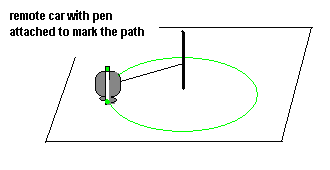
Fig. 1
The car is attached with string to a central axis.
When driven forward the path traced by the pen is a circle.
Purpose:
·
To demonstrate tangential motion.
Materials:
·
Large piece of poster paper
·
Remote control car
·
Writing devise
·
Heavy stand as an axis
·
String
·
Scissors
·
Tape
Procedure:
·
Attach the pen to the back of the car
·
Tie car to the axis
·
Have a student drive the car forward
·
Ask class to predict the path taken if the string is cut
·
Have a student cut the string
Results: On your poster you will
be left with a circle and a line coming off tangent to the circle (Fig. 2)

Fig. 2
Demonstration # 2
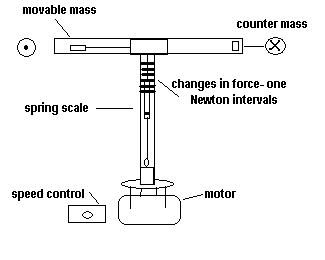
Fig. 3
The changes in force holding the object in circular motion can be seen as the device spins.
As the velocity increases the changes in force become greater.
Purpose:
·
To show what takes place to hold an object in orbit
·
To make sense of the quadratic relationship :
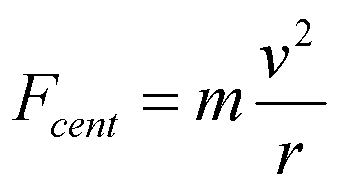
·
Compare the centripetal force on object at highest velocity
to the gravitational force of lifting the object
Materials:
·
·
A 1 kg mass
·
Device in Fig. 1 - mass of object in orbit about 0.150
kg
- speed
varies proportionally to distance the knob is turned
(alternate option: Find
two objects of distinct mass difference and empty pen casing. With a string through the pen
casing, tie the objects to either end. Hold the pen casing vertically and spin
the lighter object; as you increase the velocity it will lift the heavy object)
Procedure/Results:
·
Explain the device, and how to read the scale
·
Ask what force is “acting” as the centripetal
force
·
Draw a diagram of the circular knob for the class to see
·
Starting when the scale is at the first notch, record the
place of the speed controller. Do
this after each notch the scale reaches.
Your results will look somewhat like this:
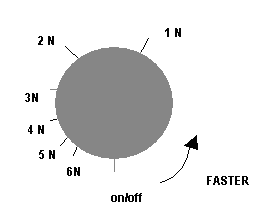
Fig. 4
This
confirms the quadratic relationship.
·
Turn the device to the highest speed
·
Turn device off
·
Show that the
force needed to lift the object is roughly the same as lifting an orange. The force the centripetal force at the
highest speed was roughly the same as lifting the 1 kg mass.
Errors:
·
The machine is not calibrated perfectly which is why we are
more interested in the changes not the values.
·
Since the change in radius is small, and does not affect the
desired result, this is neglected.
·
Comparing the force to lifting the objects is just an
approximation use to show the differences.
Demonstration # 3
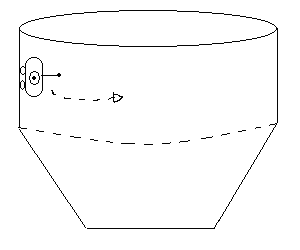
Fig. 5
A remote control car rides around on the horizontal
wall extended from a plexi-glass hemisphere.
Purpose:
·
Whiteness circular motion without obvious centripetal force
(ie. no string)
·
To show the necessary factors in order to accomplish this
Materials:
·
The plexi-glass device was made by
the talented people at the UBC Physics Machine Shop
·
A fast remote control car
·
May need rubber cement for tires to improve friction
Procedure:
·
Guide car to ride up on the wall
·
Relate it to Fig. 6- Discuss the importance of velocity for
equilibrium.
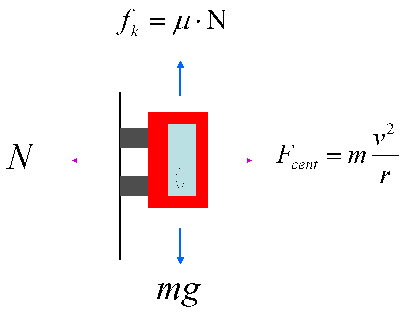
Fig. 6